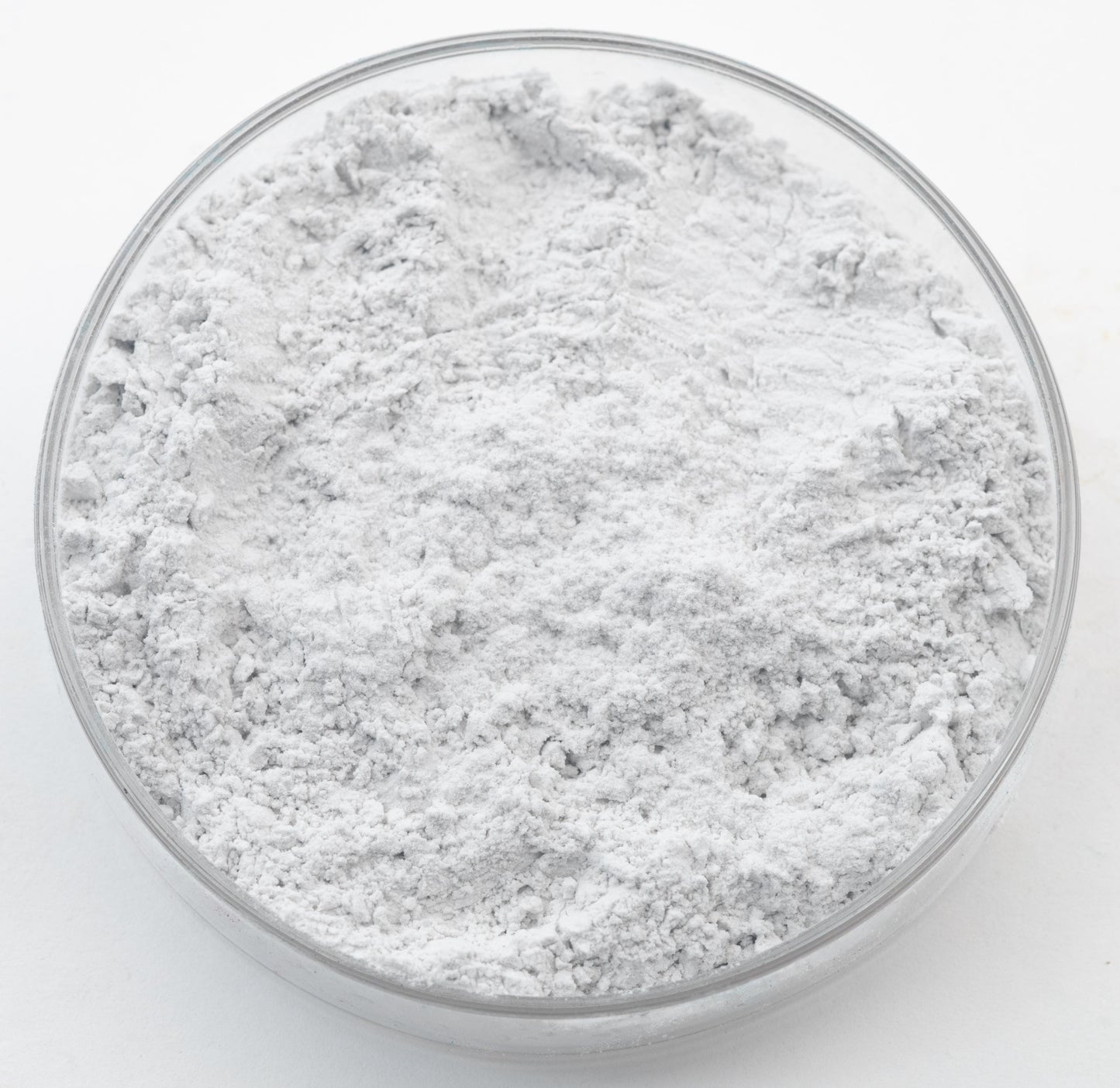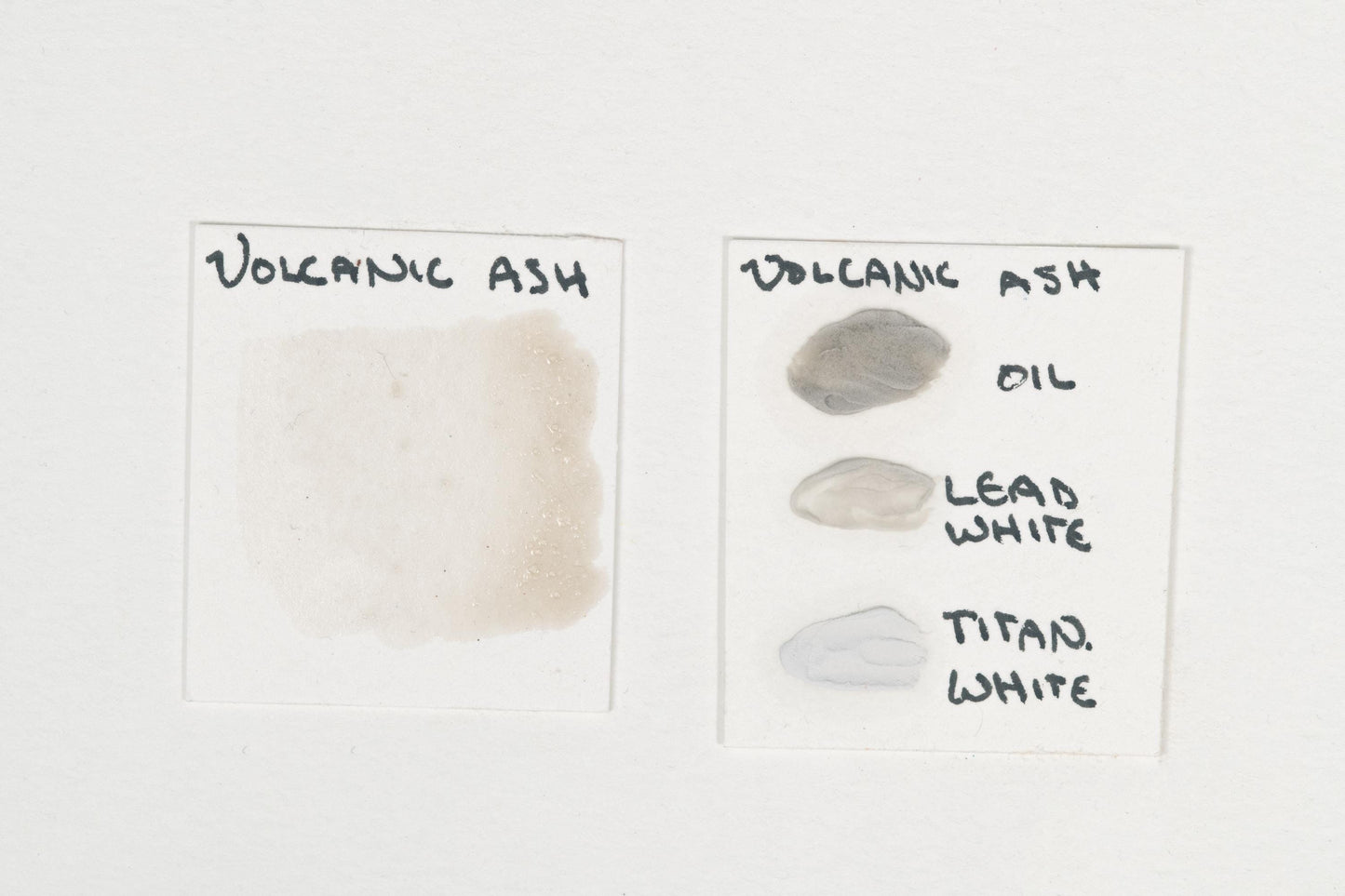Volcanic Ash
Volcanic Ash
Couldn't load pickup availability
Share


Description
Volcanic Ash, also known as Pumice, is a natural pigment derived from finely ground volcanic ash. This unique material is formed from rapidly cooled lava, resulting in a light, porous, and highly textural pigment. Volcanic White has exceptional lightfastness, making it highly durable for both classical and contemporary artwork.
It blends seamlessly with other pigments, offering soft, neutral tones in painting. Its semi-translucent quality allows for subtle layering and delicate glazing effects in oil, watercolor, and tempera applications. Compared to synthetic whites, it provides a more organic, slightly toothy texture, making it ideal for use in fresco painting, textured grounds, and mixed media applications.
History
Volcanic ash has been used for artistic and industrial purposes since ancient times, particularly in ceramics, painting, and construction materials.
During antiquity, civilizations such as the Romans and Minoans utilized volcanic ash for pigments, plasters, and cement. The Romans famously used volcanic ash from Mount Vesuvius to create pozzolanic cement, which contributed to the longevity of their architectural structures. Artists of the time also incorporated finely ground pumice into frescoes and wall paintings.
In the Middle Ages and Renaissance, volcanic ash continued to be used in pigment-making and ceramics. It was often blended into grounds for paintings and fresco applications, providing enhanced texture and stability. Venetian and Florentine artists experimented with volcanic materials to create new surface effects in painting and sculpture.
By the 19th and 20th centuries, Volcanic White gained recognition in the fields of ceramics and painting due to its unique textural and absorbent properties. It became a key ingredient in experimental glazes, matte finishes, and industrial coatings.
Today, Volcanic White remains widely used in traditional painting techniques, ceramic glaze formulations, and textured grounds for mixed media applications. It is prized for its ability to create atmospheric, natural, and earthy effects in a variety of artistic mediums.
Health and Safety
Precautions:
Keep out of reach of children and pets.
Do not consume.
Not for cosmetic or food usage.
Do not spray apply.
For further health information contact a poison control center.
Use care when handling dry pigments and avoid dust formation.
Use particular caution with fibrous, fine, or toxic pigments.
Do not eat, drink, or smoke near dry pigments.
Avoid breathing in pigment dust and use a NIOSH-certified dust respirator with sufficient rating for dry pigment.
Wash hands immediately after use or handling.
If dust is likely, always wear protective clothing to keep out of eyes, lungs, off skin, and out of any contact as well as keep area ventilated.
This product may contain chemicals known by the State of California to cause cancer, birth defects, or reproductive harm.
Warnings and bottle information are abbreviated.
Pigment Information
Pigment Type: Natural (Silicate-based volcanic glass) from minerals (SiO₂, Al₂O₃, Fe₂O₃, MgO, CaO, K₂O, Na₂O)
Suitable Mediums: Watercolor, Oil, Tempera, Acrylic, Ceramics
Lightfastness: Best
Opacity: Semi-translucent
Other Names: Pumice, Volcanic Ash White, Pozzolanic White
Color Index Code: N/A


